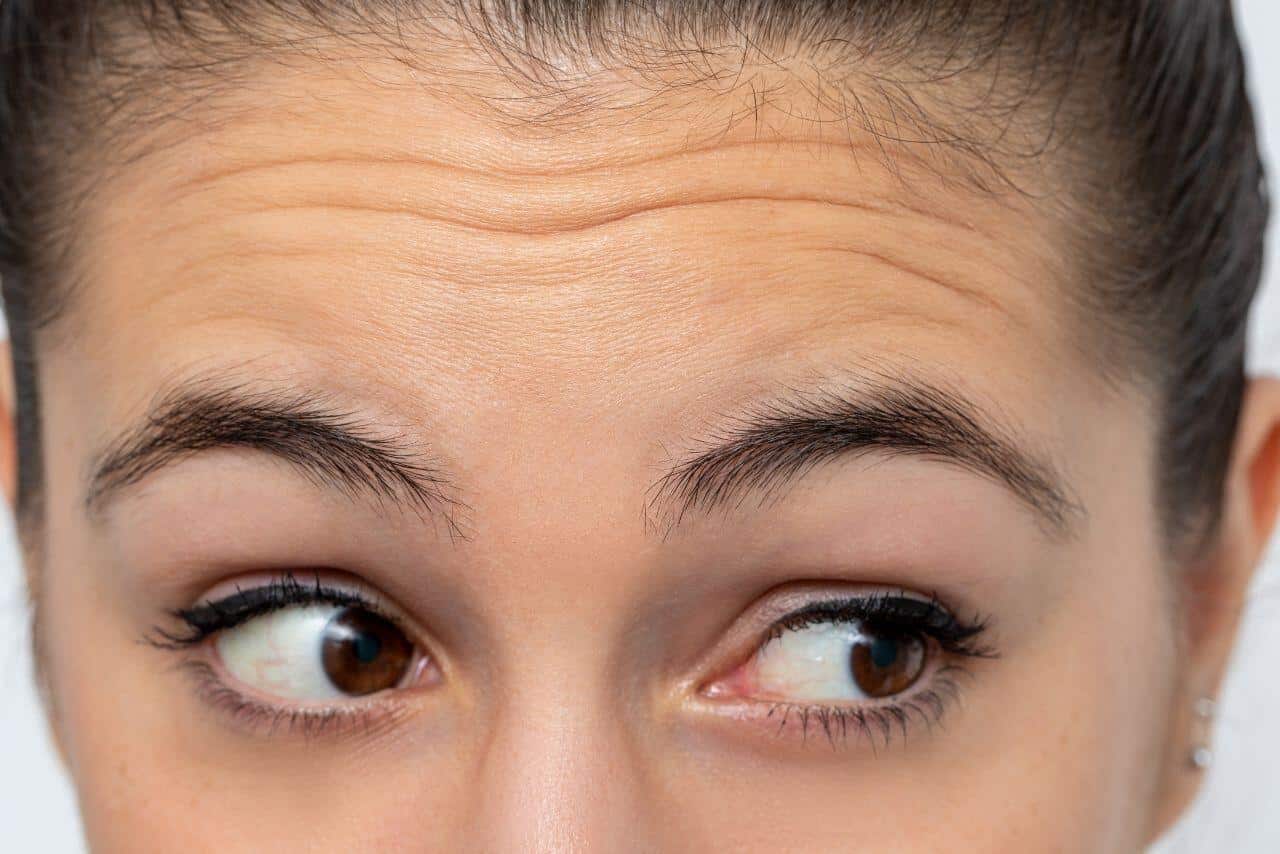
What causes forehead wrinkles?
Wrinkles formed on the forehead are caused by a number of factors, including genetics, hormones, and environmental factors. When it comes to environmental factors, as the forehead is naturally prone to sun exposure, ultraviolet (UV rays) have a significant impact on the forehead by reducing the amount of collagen and elastin in the skin. The reduction of collagen and elastin in the skin will typically lead to the formation of wrinkles. In other words, environmental factors are major influence on forehead wrinkles. (Explore the full range of our genuine Dermal Filler supplies.)
What are common aesthetic imperfections that target the forehead?
The most common aesthetic imperfections that affect the forehead, aside from fine lines and wrinkles, are skin discoloration, blemishes, dry patches, and acne scarring.
How is a Juvederm filler used to correct these cosmetic problems?
Certain Juvederm dermal fillers work to smoothen wrinkles and fine lines by instantly volumizing the skin and restoring its hydration.
Is Juvederm safe?
Juvederm is a safe and effective treatment to improve the appearance of forehead wrinkles. It is very popular among dermatologists and plastic surgeons. However, it is important that it is only administered by trained, licensed medical practitioners who have discussed the patient’s medical history prior to injection. Juvederm should not be used to treat patients with a history of severe allergies or severe allergic reactions to hyaluronic acid (or lidocaine). It should also never be used on patients who are pregnant or breastfeeding. There are some mild, temporary side effects associated with Juvederm, including swelling, bruising, itching, and pain in the injection area.
How is Juvederm injected?
Juvederm filler is injected through a thin needle and should always be administered by a professional. Before the injection, the area is cleaned with anti-bacterial swabs. Injections are spread out over multiple spots on the forehead to even out the target area. The procedure lasts for approximately 10 minutes and is typically painless. Most Juvederm dermal fillers are injected into the mid-to-deep dermis of the skin. The dermis is part of the subsurface skin layer that includes nerve endings, blood vessels, sweat, oil glands, and connective tissue.
What are the usual aftercare methods?
Patients that have undergone Juvederm injections are advised to avoid extreme facial expressions and wearing makeup for 12 hours immediately following the procedure. For the following two weeks after the procedure, patients should avoid the following:
- UV lights
- Extreme facial exposure
- Freezing temperatures
- Saunas
Who are the ideal patients for Juvederm?
Juvederm fillers are recommended for those who are experiencing signs of aging such as dehydration and wrinkles.
Does Juvederm hurt?
It is common for professionals to use a topical anesthetic prior to the injection – however, many Juvederm fillers come premixed with lidocaine, a medication used to numb tissue in a specific area to help ease the pain of injections and increase comfort for patients with a lower pain threshold.

About the Author: Doris Dickson is a specialist writer for Health Supplies Plus, focusing on the aesthetic medicine industry. She diligently researches cosmetic treatments and products to provide clear, concise information relevant to licensed medical professionals. Her work supports Health Supplies Plus’s commitment to being a reliable informational resource and trusted supplier for the aesthetic community.
Disclaimer: The content provided in this article is intended for informational purposes only and is directed towards licensed medical professionals. It is not intended to be a substitute for professional medical advice, diagnosis, or treatment, nor does it constitute an endorsement of any specific product or technique. Practitioners must rely on their own professional judgment, clinical experience, and knowledge of patient needs, and should always consult the full product prescribing information and relevant clinical guidelines before use. Health Supplies Plus does not provide medical advice.
